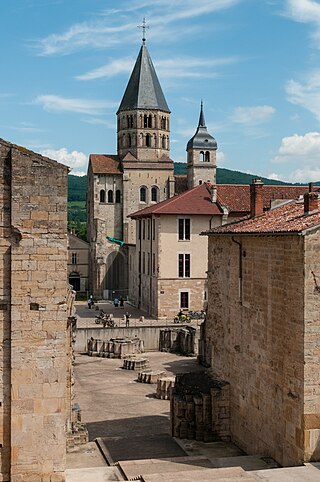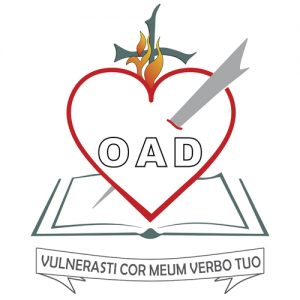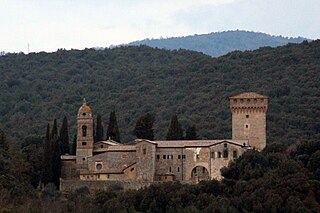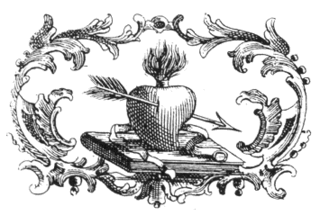Related Research Articles

Augustinians are members of several religious orders that follow the Rule of Saint Augustine, written in about 400 AD by Augustine of Hippo. There are two distinct types of Augustinians in Catholic religious orders dating back to the 12th–13th centuries:

Mendicant orders are, primarily, certain Roman Catholic religious orders that have adopted for their male members a lifestyle of poverty, traveling, and living in urban areas for purposes of preaching, evangelization, and ministry, especially to the poor. At their foundation these orders rejected the previously established monastic model. This model prescribed living in one stable, isolated community where members worked at a trade and owned property in common, including land, buildings and other wealth. By contrast, the mendicants avoided owning property at all, did not work at a trade, and embraced a poor, often itinerant lifestyle. They depended for their survival on the goodwill of the people to whom they preached. The members of these orders are not called monks but friars.

Agnellus of Pisa, was an Italian Franciscan friar. As its first Minister Provincial in England (1224–1236), he is considered the founder of the Franciscans in England. His feast day is variously observed in the Catholic church on 7 May or 10 September.

The Order of Friars Minor Conventual (O.F.M.Conv.) is a male religious fraternity in the Catholic Church and a branch of the Franciscan Order. Conventual Franciscan Friars are identified by the affix O.F.M.Conv. after their names. They are also known as Conventual Franciscans or Minorites.

The Order of Discalced Augustinians is a mendicant order that branched off from the Order of Saint Augustine as a reform movement.

The Monastery of the Holy Saviour at Lecceto in Tuscany, was the principal House of the order of the Hermit Friars of Saint Augustine in 1256, when Pope Alexander IV constituted the Augustinian order internationally. It was dedicated to Jesus as Saviour.

The Crutched Friars were a Roman Catholic religious order in England and Ireland. Their name is derived from a staff they carried with them surmounted by a crucifix. There were several orders devoted to the Holy Cross, collectively known as Crosiers, that had some presence in England and there is much confusion to which specific order the friars belonged. Earlier literature linked most of the Crutched Friars to the Italian Crosiers, but later it was proven that they were a branch of the Belgian Canons Regular of the Order of the Holy Cross. The Crutched Friars were suppressed during the Dissolution of the Monasteries in 1538.

The Order of Augustinian Recollects (OAR) is a mendicant Catholic religious order of friars and nuns. It is a reformist offshoot from the Augustinian hermit friars and follows the same Rule of St. Augustine. They have also been known as the "Discalced Augustinians".
The name Boni Homines or Bonshommes was popularly given to at least three religious orders in the Catholic Church:

The Order of Saint Augustine, abbreviated OSA, is a religious mendicant order of the Catholic Church. It was founded in 1244 by bringing together several eremitical groups in the Tuscany region who were following the Rule of Saint Augustine, written by Saint Augustine of Hippo in the fifth century.

Clare Priory is a religious house in England, originally established in 1248 as the first house of the Augustinian Friars in England. It is situated on the banks of the River Stour, a short distance away from the medieval village of Clare, Suffolk. The friary was suppressed in 1538 and the property passed through many hands until it was again purchased by the Augustinian friars in 1953. Today the Priory offers modern retreat facilities for guests.

Our Lady of Good Counsel is a title given to the Blessed Virgin Mary, after a painting said to be miraculous, now found in the thirteenth century Augustinian church at Genazzano, near Rome, Italy. Measuring 40 to 45 centimetres the image is a fresco executed on a thin layer of plaster no thicker than an egg shell. Over the centuries, devotions to Our Lady of the Good Counsel grew among saints and Popes, to the extent that a reference to it was added to the Litany of Loreto and the devotion spread throughout the world. Her feast day is 26 April.

Ashridge Priory was a medieval college of Austin canons called variously the "Brothers of Penitence" or the "Boni Homines". It was founded by Edmund of Almain in 1283 who donated, among other things, a phial of Christ's blood to the abbey. It was granted to Mary Tudor, Queen of France and later became the private residence of the future queen Elizabeth I. It was acquired by Sir Thomas Egerton in 1604 and then passed down to the Duke of Bridgewater before being demolished.
The Portuguese Boni Homines, or Secular Canons of St. John the Evangelist, were a Catholic religious institute. They were founded by John Vicente, afterwards Bishop of Lamego, in the fifteenth century. Living at first independently in a monastery granted to them by the Archbishop of Braga at Villar de Frades, they afterwards embraced the institute of Secular Canons of St. George in Alga, and the Portuguese order was confirmed by Pope Martin V under the title of "Boni Homines". They had fourteen houses in Portugal, and King João III gave them charge of all the royal hospitals in the kingdom, while many of the canons went out as missionaries to India and Ethiopia. Several members of the order won a high reputation as scholars and theologians.
The Hermits of Saint William (Williamites) was a religious community founded by Albert, companion and biographer of William of Maleval, and Renaldus, a physician who had settled at Maleval shortly before William's death. It followed William's practice, and quickly spread over Italy, Germany, France, Flanders and Hungary. In 1256, some houses joined the Hermits of St. Augustine, while other houses continued as a separate congregation, eventually adopting the Benedictine rule.
Francis Nugent was an Irish priest of the Franciscan Capuchin Order. He was the founder of the Irish and the Rhenish Provinces of the Order.
Sack Friary, Bristol was a friary in Bristol, England. It was established in 1266 and dissolved in 1286.

The Canonesses of St. Augustine of the Mercy of Jesus are a Roman Catholic religious order of canonesses who follow a semi-contemplative life and are also engaged in the ministry of caring for the sick and needy, from which they were also known as the "Hospital Sisters".
The Canons Regular of San Giorgio in Alga were a congregation of canons regular which was influential in the reform movement of monastic life in northern Italy during the 15th and 16th centuries.
Leicester Friars of the Sack is a former Friary of The Friars of the Order of the Penitence of Jesus Christ, in Leicester, England.
References
- ↑ F.A. Gasquet, English Monastic Life, pp. 234-242.
- ↑ Hunter-Blair, Oswald. "Boni Homines." The Catholic Encyclopedia Vol. 2. New York: Robert Appleton Company, 1907. 30 May 2021
 This article incorporates text from this source, which is in the public domain .
This article incorporates text from this source, which is in the public domain . - ↑ Pegge 1772, p. 5.
- ↑ Heimbucher, Max. "Hermits of St. Augustine." The Catholic Encyclopedia Vol. 7. New York: Robert Appleton Company, 1910. 30 May 2021
 This article incorporates text from this source, which is in the public domain .
This article incorporates text from this source, which is in the public domain . - ↑ Olderr, Steven. Dictionary of World Monasticism, McFarland, 2020, p.78 ISBN 9781476640877
- ↑ Andrews, Frances (2006). The Other Friars: The Carmelite, Augustinian, Sack and Pied. Boydell & Brewer. p. 175-233. ISBN 9781846154973.
- ↑ NRO BL/MD 10
- ↑ Pegge 1772, p. 6.
- ↑ Pegge 1772, p. 7.
- Pegge, Samuel (1772). Memoir concerning the Sac-Friars or fratres de poenitentia Jesu Christi as settled here in England . Retrieved 8 June 2022.
 This article incorporates text from this source, which is in the public domain .
This article incorporates text from this source, which is in the public domain .
![]() This article incorporates text from a publication now in the public domain : Herbermann, Charles, ed. (1913). "Boni Homines". Catholic Encyclopedia . New York: Robert Appleton Company.
This article incorporates text from a publication now in the public domain : Herbermann, Charles, ed. (1913). "Boni Homines". Catholic Encyclopedia . New York: Robert Appleton Company.